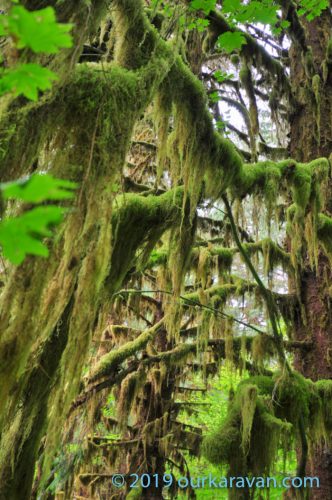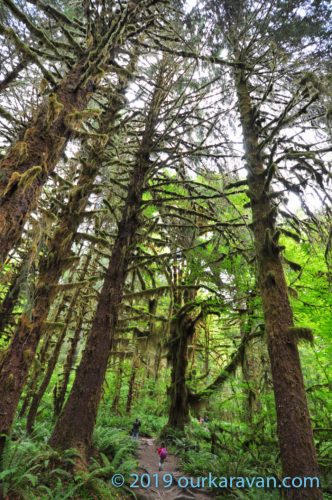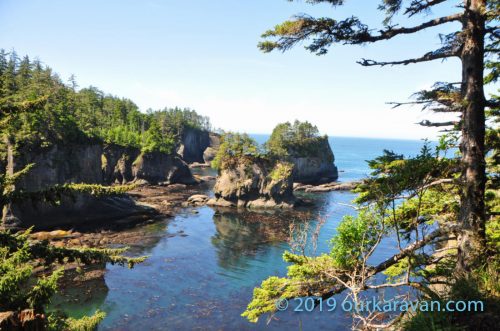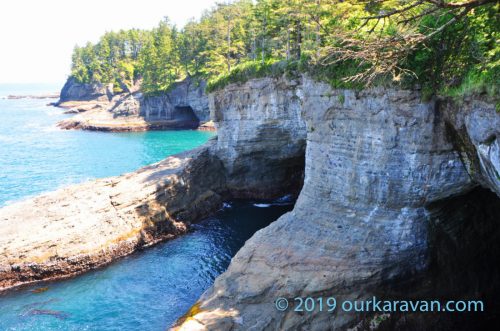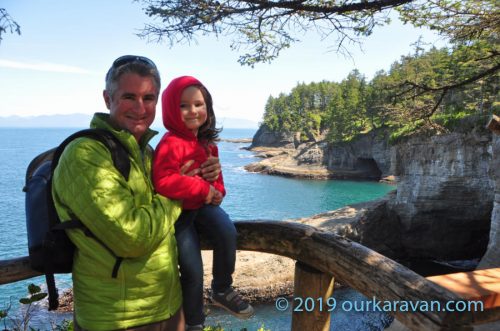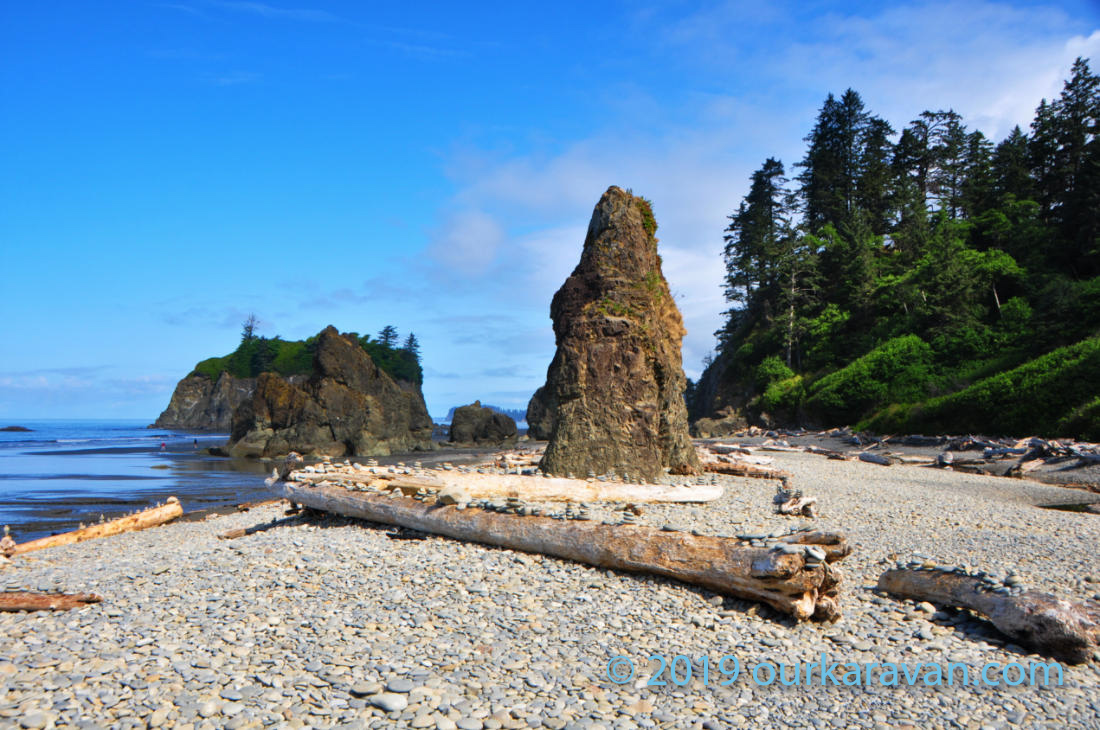Top Things to See in
Olympic National Park

Washington State: Olympic National Park
Summer, 2019
You might be surprised to find out Washington state has more glaciers than the other 47 contiguous states combined. Nearly 200 glaciers are located in Olympic National Park alone. The world’s greatest annual snowfall occurs on Mount Olympus, while Mount Rainier holds the distinction of the highest point in Washington state. Wanting to escape some of California’s mid-July heat, we packed up the van and headed north to see Olympic National Park.
Top 8 Things to See in Olympic National Park
1. Hoh Rain Forest
The forests of the Olympic Peninsula are among the rainiest places in the world. Hoh Rain Forest receives 12 feet of rain annually. The Sitka Spruce and Western Hemlock are most common here, each of which can reach over 300 feet tall and 7 feet in diameter. We loved seeing the different mosses attached to the trees, which get their moisture and nutrients from the air, rain, fog and debris that accumulates around them. We hiked approximately 4 miles of the Hoh River Trail, which was more than enough to see the things that make this rain forest famous.
Hoh Valley Road heads northeast from Highway 101 and leads to the Hoh Rain Forest Visitor’s Center. From here you can hike the Hall of Mosses Trail and the Hoh River Trail. The latter leads 17.3 miles one-way to Glacier Meadows.
2. Lake Crescent
Lake Crescent is a glacially-carved lake found directly off Highway 101. It is located about 15 miles west of Port Angeles, Washington. The water is vibrant and clear, with visibility down as far as 60-feet. A recent bathymetric survey found the reservoir to be 596 feet deep. Beardslee and Crescenti trout are found in Lake Crescent, which are found nowhere else in the world.
Lake Sutherland is located very slightly east of Lake Crescent where we spent the better part of the day paddle boarding. Public access is via the boat launch on the south side of the lake. Water is cold, but it felt warmer than the waters of Lake Crescent. Lake Sutherland was less windy as well, which made for easier paddle boarding.
3. Hurricane Ridge
Hurricane Ridge is named for the hurricane-strength winds that blow through the area in the winter time. In the summer this location offers great views of both the Olympic Mountains as well as the coast.
We unfortunately did not make it to Hurricane Ridge as we thought the area was accessible from the Lake Crescent area. That is not the case, Hurricane Ridge is accessed by driving south on Hurricane Ridge Road, south of the town of Port Angeles. However this article would be remiss had we not mentioned this as one of the top things to see in Olympic National Park.
4. Elwha River Hike
The Elwha River is the Olympic Peninsula’s largest watershed. Two dams were constructed on the river in the early 20th century to supply power to local milling operations. Dams create barriers to fish passage, and eliminated the impressive salmon returns that previously existed. In 1992 the Elwha River Ecosystem and Fisheries Restoration Act was passed. By 2014, both the Elwha and Gilnes Canyon Dam had been removed in the largest dam removal project in U.S. history. The Elwha River now flows freely from its headwaters in the Olympic Mountains to the Strait of Juan de Fuca. Anadromous salmon and trout are now able to naturally migrate past the former dam sites for the first time in over 100 years.
The Elwha River Trail extends 28.4 miles from the Whiskey Bend Trailhead to Low Divide, following the Elwha River the entire way. The trail passes multiple stream tributaries and features Fir, Hemlock, and Spruce trees much like the Hoh Rain Forest.
5. Sol Duc Valley and Sol Duc Falls
Sol Duc Falls is one of the more popular things to see when visiting Olympic National Park. The hike to the falls is under 1 mile from the trailhead. In contrast with the other water falls in the park, Sol Duc Falls is viewed from above, rather than below. For longer hikes you can do Lover’s Lane (6 mile loop) or the hike to Mink Lake (5.2 miles roundtrip). The Sol Duc River is immediately adjacent to Sol Duc Road, for those that want to skip the hike.
The Sol Duc Valley features a number of hiking trails where you can experience both the valleys and the mountains. Specifically, the High Divide Loop passes through Seven Lakes Basin and is often done in 2-3 days. This trail offers excellent views of Mt. Olympus.
During late October and early November you can watch the coho salmon leap their way up the river to spawn. The best place to see this is the Salmon Cascades overlook, located approximately 5 miles down the Sol Duc Road.
6. Sol Duc Hot Springs
Is all the intense hiking and sightseeing wearing you out? Look no further than Sol Duc Hot Springs. We did not take photos here because, well…that would be creepy. The website linked above will tell you everything you need to know about their resort. There are three developed pools with water piped from local hot springs, and one freshwater swimming pool. The hot spring pools vary from 99 degrees to 104 degrees Fahrenheit. The cooler pool is shallow and perfect for toddlers. My 5-year old played in the shallow pool while us adults were in the hotter pool not even 5-feet away.
We split our time between the hot pools and the freshwater swimming pool. This is when I discovered the vehicle keys to the Sprinter in my pocket. Woops. I’m not sure how, but the keys still worked fine, and continue to work to this day. I highly recommend carrying an extra set of keys. I had a set and thankfully did not need them.
7. Cape Flattery
Cape Flattery is the northwestern-most point of the contiguous United States. To the west lies the Pacific Ocean and the entrance to the Strait of Juan de Fuca to the east. The trail that leads to Cape Flattery is approximately 3/4 of a mile each direction. Due to the amount of precipitation this area receives, much of the trail is on a slightly elevated wood platform. Some portions of the trail can be muddy, so come prepared. Wooden viewing platforms reside in several locations to provide views in all directions.
It’s a bit of a haul to get out to the Neah Bay/Cape Flattery area, but well worth the effort. We managed to visit it on a clear day and had excellent views of Mushroom Rock and Tatoosh Island. Cape Flattery is part of the Makah Indian Reservation, and they require the purchase of a $10 annual pass for utilizing the trailheads and beaches.
8. Ruby Beach
Ruby Beach is often touted as the most beautiful beach in Washington State. The beach is most known for its sea stacks, piles of large driftwood and smooth cobbles, and the tidepools that can be contained within the seastacks. If you’re looking for a warm beach, this probably isn’t it. But it’s difficult to beat the scenery!
The DNR Discover Pass
Depending on the type of adventure you plan to have in Olympic National Park, you may find it necessary to obtain a Discover Pass. The program is administered by the Washington State Department of Natural Resources (DNR). We were not aware of this fact when we arrived, but were able to purchase one during our visit. The website linked above indicates locations where they can be physically purchased. You can also buy the pass online (which we did) or phone it in. We were told to simply tape the pass number and our vehicle license plate number to the inside window of our vehicle to prove we had purchased the pass. (The actual pass was mailed to our home in California.)
According to the DNR website, you do not need the pass if you just want to drive through lands managed by DNR and you do not leave your vehicle. Because we were staying overnight and utilizing various campgrounds and trailheads, we required the pass. The pass costs $10 per day or $35 for an annual. In the end, the annual pass actually saved us money as we were able to utilize the DNR campgrounds. See the section below for more information.
Camping in Olympic National Park

If you are new here, we travel via a self-built Sprinter van, which we find to be a wonderful and efficient way to travel. We typically do not make reservations so we can enjoy the freedom of exploring areas at a comfortable pace, rather than being driven by a schedule. Many of Olympic National Park’s campgrounds are first-come, first-served. Of the fourteen National Parks Service campgrounds listed on their website, Kalaloch and Sol Duc campgrounds are the only ones that accept reservations.
The Department of Natural Resources (DNR) list ten campgrounds within their jurisdiction. All of their campsites are first-come, first-served. Better yet, they are FREE, or should we say included, as part of your purchase of the Discover Pass. We spent three nights at the Lyre River Campground and two nights at Hoh Oxbow Campground, all for the total cost of $35 for the pass. The campgrounds were clean and both had rivers flowing through the grounds. If you’re traveling in a smaller self-contained vehicle and have difficulty finding camping, consider using the smartphone app iOverlander or Campendium to locate a place to camp in a pinch. We did the first night as we arrived in the park late, then moved to established campgrounds the following evenings.
Trip Stats
This trip led us from California to Bend, Oregon. We were briefly in Mt. Hood and Mt. Rainier National Parks before making our way to Olympic National Park. We then drove the entire coast of Washington and the north-half of the Oregon coast on Highway 101. We drove the rest of the way home on Interstate 5.
The 9-foot tall house-on-wheels averaged 24.2 miles per gallon over the course of this 2,364 mile trip. Driving hours from California were 56 hours, 52 minutes. Throughout most of the trip the van was averaging over 26 MPG.
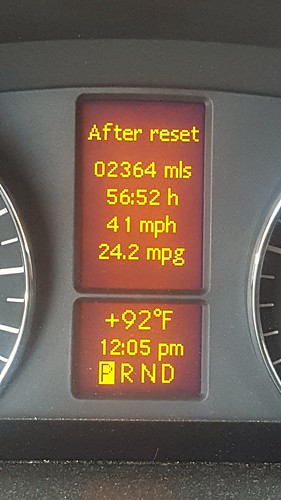
24.2 MPG over 2,364 miles
Final Thoughts
There is far more to explore in Olympic National Park than discussed here. We hope this article sheds some light on things to see, where to camp, and the logistics of spending time in the park. Next year we may venture up to Vancouver Island, and in doing so we will certainly hit some of the places we missed at Olympic this time-around.
To see more photos of our travels including Olympic National Park, follow us on Instagram. To learn more about our Sprinter Van and how we turned it into our home away from home, check out our website. Thanks for reading and happy travels!

